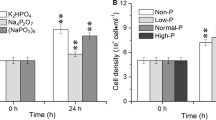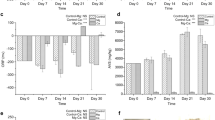Abstract
Volatile organic sulfur compounds (VOSCs) are frequently reported in eutrophic lakes during the process of algal blooms’ degradation. The algal-induced so-called black water blooms have been purported to be a big contributor to the production of VOSCs. However, the production mechanism of VOSCs in black water blooms and its influencing factors still remain unclear. In this study, a laboratory sediment/algal slurry experiment was carried out to investigate the formation process of black water blooms and factors such as temperature, microorganisms, and sulfate concentrations on the production of VOSCs in eutrophic lake sediments during the decomposition of algal blooms. The simulation study indicated that black water blooms can only be produced with the participation of sediment and algal together, which could be the result of low redox potential and the continuous release of ferrion irons (Fe2+) and hydrogen sulfide (H2S) into the lake’s ecosystem; however, neither of algal nor sediment can induce the formation of black water blooms. In addition, the sediment + algal treatment can produce more VOSCs than a single sediment or algal treatment. Higher temperature incubation and a higher concentration of sulfate additions can enhance the concentration of H2S and VOSCs in black water blooms. However, the addition of microbial inhibitors in the algal/sediment slurry indicated that sulfate reducing bacteria (SRB) can stimulate the production of VOSCs, whereas methanogen might consume some concentration of VOSCs and thus lower their concentration in black water blooms.








Similar content being viewed by others
References
Bentley, R., & Chasteen, T. G. (2004). Environmental VOSCs—formation and degradation of dimethyl sulfide, methanethiol and related materials. Chemosphere, 55(3), 291–317. doi:10.1016/j.chemosphere.2003.12.017.
Cheng, X., Peterkin, E., & Burlingame, G. A. (2005). A study on volatile organic sulfide causes of odors at Philadelphia’s Northeast Water Pollution Control Plant. Water Research, 39(16), 3781–3790. doi:10.1016/j.watres.2005.07.009.
Devai, I., & DeLaune, R. D. (1995). Formation of volatile sulfur compounds in salt marsh sediment as influenced by soil redox condition. Organic Geochemistry, 23(4), 283–287. doi:10.1016/0146-6380(95)00024-9.
Diaz, R. J., & Rosenberg, R. (2008). Spreading dead zones and consequences for marine ecosystems. Science, 321(5891), 926–929. doi:10.1126/science.1156401.
Du, W., & Parker, W. (2012). Modeling volatile organic sulfur compounds in mesophilic and thermophilic anaerobic digestion of methionine. Water Research, 46(2), 539–546. doi:10.1016/j.watres.2011.11.043.
Duan, H., Ma, R., Xu, X., Kong, F., Zhang, S., Kong, W., Hao, J., & Shang, L. (2009). Two-decade reconstruction of algal blooms in China’s Lake Taihu. Environmental Science and Technology, 43(10), 3522–3528. doi:10.1021/es8031852.
Duan, H., Ma, R., Loiselle, S. A., Shen, Q., Yin, H., & Zhang, Y. (2014). Optical characterization of black water blooms in eutrophic waters. Science of the Total Environment, 482–483, 174–183. doi:10.1016/j.scitotenv.2014.02.113.
Duan, H., Loiselle, S. A., Zhu, L., Feng, L., Zhang, Y., & Ma, R. (2015). Distribution and incidence of algal blooms in Lake Taihu. Aquatic Sciences, 77(1), 9–16. doi:10.1007/s00027-014-0367-2.
Duan, H., Loiselle, S. A., Li, Z., Shen, Q., Du, Y., & Ma, R. (2016). A new insight into black blooms: synergies between optical and chemical factors. Estuarine Coastal Shelf Science, 175, 118–125. doi:10.1016/j.ecss.2016.03.029.
Feng, Z., Fan, C., Huang, W., & Ding, S. (2014). Microorganisms and typical organic matter responsible for lacustrine “black bloom”. Science of the Total Environment, 470–471(0), 1–8. doi:10.1016/j.scitotenv.2013.09.022.
Franzmann, P. D., Heitz, A., Zappia, L. R., Wajon, J. E., & Xanthis, K. (2001). The formation of malodorous dimethyl oligosulphides in treated groundwater: the role of biofilms and potential precursors. Water Research, 35(7), 1730–1738. doi:10.1016/S0043-1354(00)00425-5.
Ginzburg, B., Chalifa, I., Zohary, T., Hadas, O., Dor, I., & Lev, O. (1998). Identification of oligosulfide odorous compounds and their source in the Lake of Galilee. Water Research, 32(6), 1789–1800. doi:10.1016/S0043-1354(97)00396-5.
Hu, H., Mylon, S. E., & Benoit, G. (2007). Volatile organic sulfur compounds in a stratified lake. Chemosphere, 67(5), 911–919. doi:10.1016/j.chemosphere.2006.11.012.
Lee, P. A., Priscu, J. C., DiTullio, G. R., Riseman, S. F., Tursich, N., & de Mora, S. J. (2004). Elevated levels of dimethylated-sulfur compounds in Lake Bonney, a poorly ventilated Antarctic lake. Limnology and Oceanography, 49(4), 1044–1055. doi:10.4319/lo.2004.49.4.1044.
Liu, C., Shen, Q., Zhou, Q., Fan, C., & Shao, S. (2015). Precontrol of algae-induced black blooms through sediment dredging at appropriate depth in a typical eutrophic shallow lake. Ecological Engineering, 77, 139–145. doi:10.1016/j.ecoleng.2015.01.030.
Lomans, B. P., van der Drift, C., Pol, A., & Op den Camp, H. J. M. (2002). Microbial cycling of volatile organic sulfur compounds. CMLS, Cellular Molecular Life Science, 59(4), 575–588. doi:10.1007/s00018-002-8450-6.
Lu, X., Fan, C., He, W., Deng, J., & Yin, H. (2013). Sulfur-containing amino acid methionine as the precursor of volatile organic sulfur compounds in algea-induced black bloom. Journal of Environmental Sciences, 25(1), 33–43. doi:10.1016/S1001-0742(12)60019-9.
Ma, Z., Niu, Y., Xie, P., Chen, J., Tao, M., & Deng, X. (2013). Off-flavor compounds from decaying cyanobacterial blooms of Lake Taihu. Journal of Environmental Sciences, 25(3), 495–501. doi:10.1016/S1001-0742(12)60101-6.
Pucciarelli, S., Buonanno, F., Pellegrini, G., Pozzi, S., Ballarini, P., & Miceli, C. (2008). Biomonitoring of Lake Garda: Identification of ciliate species and symbiotic algae responsible for the “black-spot” bloom during the summer of 2004. Environmental Research, 107(2), 194–200. doi:10.1016/j.envres.2008.02.001.
Rees, G. N., Baldwin, D. S., Watson, G. O., & Hall, K. C. (2010). Sulfide formation in freshwater sediments, by sulfate-reducing microorganisms with diverse tolerance to salt. Science of the Total Environment, 409(1), 134-–139. doi:10.1016/j.scitotenv.2010.08.062.
Rusch, A., Töpken, H., Böttcher, M. E., & Höpner, T. (1998). Recovery from black spots: results of a loading experiment in the Wadden Sea. Journal of Sea Research, 40(3–4), 205–219. doi:10.1016/S1385-1101(98)00030-6.
Sun, J., Hu, S., Sharma, K. R., Ni, B. J., & Yuan, Z. (2015). Degradation of methanethiol in anaerobic sewers and its correlation with methanogenic activities. Water Research, 69, 80–89. doi:10.1016/j.watres.2014.11.004.
Yang, M., Yu, J., Li, Z., Guo, Z., Burch, M., & Lin, T.-F. (2008). Taihu Lake not to blame for Wuxi’s woes. Science, 319(5860), 158. doi:10.1126/science.319.5860.158a.
Yu, D., Xie, P., Zeng, C., Xie, L., & Chen, J. (2016). In situ enclosure experiments on the occurrence, development and decline of black bloom and the dynamics of its associated taste and odor compounds. Ecological Engineering, 87, 246–253. doi:10.1016/j.ecoleng.2015.11.039.
Zhang, X. J., Chen, C., Ding, J.-Q., Hou, A., Li, Y., Niu, Z.-B., Su, X.-Y., Xu, Y. J., & Laws, E. A. (2010). The 2007 water crisis in Wuxi, China: analysis of the origin. Journal of Hazardous Materials, 182(1–3), 130–135. doi:10.1016/j.jhazmat.2010.06.006.
Acknowledgments
This study was supported by the National Natural Science Foundation of China (Grant Nos. 41371479 and 20907057) and Key Research Program of Jiangsu (Grant No. BE2016811) and the Provincial Natural Science Foundation of Jiangsu of China (BK20160049).
Author information
Authors and Affiliations
Corresponding author
Rights and permissions
About this article
Cite this article
Yin, H., Wu, Y. Factors Affecting the Production of Volatile Organic Sulfur Compounds (VOSCs) from Algal-Induced Black Water Blooms in Eutrophic Freshwater Lakes. Water Air Soil Pollut 227, 356 (2016). https://doi.org/10.1007/s11270-016-3061-2
Received:
Accepted:
Published:
DOI: https://doi.org/10.1007/s11270-016-3061-2




